-
 Bitcoin
Bitcoin $119800
1.38% -
 Ethereum
Ethereum $3873
3.25% -
 XRP
XRP $3.247
1.85% -
 Tether USDt
Tether USDt $1.001
0.02% -
 BNB
BNB $840.4
5.94% -
 Solana
Solana $190.0
2.55% -
 USDC
USDC $1.000
0.03% -
 Dogecoin
Dogecoin $0.2433
2.69% -
 TRON
TRON $0.3197
-0.05% -
 Cardano
Cardano $0.8367
1.39% -
 Sui
Sui $4.327
3.11% -
 Hyperliquid
Hyperliquid $44.00
0.31% -
 Stellar
Stellar $0.4461
1.76% -
 Chainlink
Chainlink $19.25
4.61% -
 Hedera
Hedera $0.2941
3.90% -
 Bitcoin Cash
Bitcoin Cash $598.4
6.89% -
 Avalanche
Avalanche $26.19
4.67% -
 Litecoin
Litecoin $115.1
0.50% -
 Shiba Inu
Shiba Inu $0.00001427
1.55% -
 Toncoin
Toncoin $3.379
2.01% -
 UNUS SED LEO
UNUS SED LEO $8.966
-0.16% -
 Ethena USDe
Ethena USDe $1.001
0.02% -
 Uniswap
Uniswap $11.04
4.16% -
 Polkadot
Polkadot $4.239
2.00% -
 Monero
Monero $324.6
0.36% -
 Bitget Token
Bitget Token $4.672
2.46% -
 Pepe
Pepe $0.00001294
2.69% -
 Dai
Dai $0.0000
0.01% -
 Cronos
Cronos $0.1443
2.71% -
 Aave
Aave $302.9
1.98%
What is the transfer speed and confirmation time of USDT?
USDT transfer speeds and confirmation times vary drastically depending on the network (Omni, Ethereum, Tron, Solana, EOS), with Solana offering sub-second confirmations while Omni can take hours, influenced by network congestion and transaction fees.
Feb 28, 2025 at 03:48 am
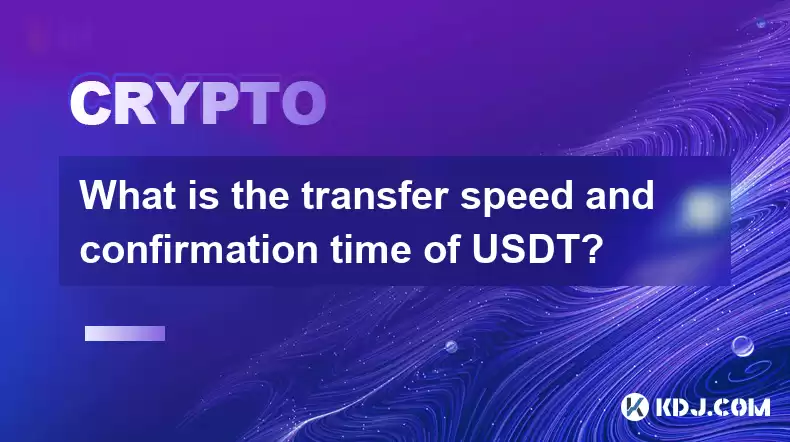
What is the transfer speed and confirmation time of USDT?
Key Points:
- USDT transfer speeds and confirmation times are not fixed and depend heavily on the network used to process the transaction (e.g., Omni, Ethereum, Tron, Solana, EOS). Each network has its own unique characteristics affecting transaction speed and confirmation times.
- Transaction fees also vary significantly between networks, impacting the overall cost-effectiveness of a USDT transfer. Faster networks generally command higher fees.
- Network congestion plays a crucial role. High network activity can lead to significantly longer confirmation times regardless of the underlying network.
- The choice of wallet and its interaction with the chosen network can also subtly affect the speed and confirmation time.
Understanding USDT Transfer Speeds and Confirmation Times Across Different Networks:
The speed and confirmation time of USDT transfers are not uniform; they depend significantly on the blockchain network used. USDT, a popular stablecoin pegged to the US dollar, exists on several blockchains. Let's explore some of the most common ones:
Omni Layer (on Bitcoin): USDT was initially issued on the Omni Layer, a protocol built on top of the Bitcoin blockchain. Transactions on Omni are relatively slow compared to other options.
- Speed: Omni transactions are known for their slow speeds. This is because Bitcoin's blockchain has a relatively low transaction throughput and confirmation times are deliberately slow to ensure security. Expect significant delays, potentially ranging from several minutes to even hours during periods of high network congestion. The processing of the transaction itself might be relatively fast, but the confirmation process is the bottleneck. This inherent slowness stems from Bitcoin's consensus mechanism (Proof-of-Work), requiring significant computational power to validate transactions. The overall speed depends heavily on the miners' processing capacity and the size of the mempool (the pool of unconfirmed transactions).
- Confirmation Time: Confirmation times typically range from 10 minutes to over an hour, and sometimes even longer during peak network activity. While a transaction might be broadcast and initially considered "pending," true confirmation requires multiple block confirmations, adding to the delay. Users often opt for a higher number of confirmations (e.g., 6 confirmations) to enhance the security of their transaction, further increasing the waiting time. The variability of the confirmation time makes it difficult to provide a precise estimate. Real-world experiences show a wide range depending on the network load. Furthermore, factors like transaction fees play a role; higher fees might incentivize miners to process the transaction faster, but this is not guaranteed.
- Fees: Transaction fees on Omni are relatively low compared to some other networks, but this comes at the cost of speed. However, even these low fees can fluctuate based on network congestion. When the Bitcoin network is busy, the fees might increase significantly to encourage miners to include transactions in the block.
Ethereum: USDT is also available on the Ethereum blockchain. Ethereum's speed is considerably faster than Omni, but still slower than some newer blockchains.
- Speed: Ethereum transactions are processed relatively quickly compared to Bitcoin's Omni layer, but still experience delays during periods of high network activity. The speed depends on the gas price (transaction fee) and the current network congestion. Higher gas prices generally lead to faster processing times as miners prioritize transactions with higher fees.
- Confirmation Time: Confirmation times on Ethereum generally range from a few seconds to several minutes, depending on the gas price and network congestion. Usually, a confirmation of around 1-3 blocks (each block takes around 12-15 seconds) is considered sufficient for a reasonably secure transaction. However, during peak times, this time can extend to much longer periods. The decentralized nature of the network means that the confirmation time is not guaranteed and is subject to the unpredictable nature of network activity.
- Fees: Ethereum transaction fees (gas fees) are significantly higher than Omni, often fluctuating wildly depending on network congestion. During periods of high demand, these fees can become prohibitively expensive. The cost of a transaction is directly related to the amount of computational power required to process it.
Tron: USDT on Tron boasts significantly faster transaction speeds than both Omni and Ethereum.
- Speed: Tron's delegated Proof-of-Stake (DPoS) consensus mechanism allows for much faster transaction processing compared to Proof-of-Work blockchains like Bitcoin. The network's architecture is designed for high throughput, leading to noticeably quicker transfer times.
- Confirmation Time: Confirmation times on Tron are typically very short, often within seconds. This speed is a significant advantage over other networks, making it a preferred choice for users who prioritize speed. However, the speed can still be impacted by network congestion, although this is less frequent than on Ethereum or Omni. The short confirmation times contribute to a more efficient and user-friendly experience.
- Fees: Transaction fees on Tron are generally low, contributing to its overall cost-effectiveness. This low fee structure, combined with fast transaction speeds, makes it an attractive option for many users. However, it is important to note that fees can still fluctuate based on network activity.
Solana: Solana is another blockchain known for its extremely fast transaction speeds.
- Speed: Solana utilizes a unique consensus mechanism that allows for incredibly high transaction throughput. This translates to exceptionally fast USDT transfer speeds.
- Confirmation Time: Confirmation times on Solana are typically measured in sub-seconds, making it one of the fastest networks for USDT transactions. The speed is a key selling point for Solana, attracting users who require near-instantaneous transactions. However, it's important to note that Solana, like all networks, is susceptible to periods of congestion, though these are often less prolonged than on other blockchains.
- Fees: Transaction fees on Solana are generally relatively low, comparable to Tron, but can still vary depending on network conditions. The low fees combined with the blazing fast speeds make it a very attractive platform for many users.
EOS: EOS also offers relatively fast transaction speeds.
- Speed: EOS uses a Delegated Proof of Stake (DPoS) consensus mechanism, similar to Tron, allowing for high transaction throughput. This results in faster transfer speeds than older networks like Omni or even Ethereum.
- Confirmation Time: Confirmation times on EOS are typically within seconds, but can be slightly longer than Solana or Tron during periods of peak network activity.
- Fees: EOS boasts very low transaction fees, often negligible for many users. This contributes to the platform's appeal for users who prioritize both speed and low cost.
The above descriptions provide a general overview. Actual speeds and confirmation times can fluctuate due to network congestion, the specific wallet used, and other unforeseen circumstances. Always check the status of the chosen network before making a significant USDT transfer.
FAQs:
Q: What is the average confirmation time for a USDT transaction?
A: There's no single average confirmation time for USDT. It dramatically varies depending on the blockchain network used (Omni, Ethereum, Tron, Solana, EOS, etc.). Omni can take hours, while Solana might take mere seconds. Network congestion also plays a huge role.
Q: Which network is the fastest for USDT transfers?
A: Generally, Solana is considered among the fastest, followed closely by Tron. However, "fastest" is relative and depends on real-time network conditions.
Q: Are there any fees associated with USDT transfers?
A: Yes, there are transaction fees on all networks. These fees vary significantly, with Omni having typically lower fees than Ethereum, while Tron and Solana generally offer low fees as well. The fees are paid to the miners or validators who process the transactions.
Q: How can I check the status of my USDT transaction?
A: You can typically check the status of your transaction using a block explorer specific to the blockchain you used (e.g., a Bitcoin block explorer for Omni, an Ethereum block explorer for Ethereum transactions, etc.). Most cryptocurrency wallets also provide transaction tracking features.
Q: What happens if my USDT transaction fails?
A: If a transaction fails, the USDT usually remains in your wallet. However, depending on the cause of the failure (e.g., insufficient funds, incorrect address, network issues), you may need to contact your exchange or wallet provider for assistance. It's crucial to double-check all details before initiating a transfer.
Q: Is it safer to use a faster network for USDT transfers?
A: Speed doesn't necessarily equate to security. All networks have their security measures. While faster networks might seem safer due to less time spent in a pending state, it's more important to choose a reputable and well-established blockchain network and wallet. Always prioritize security best practices, regardless of speed.
Q: Can I choose the network when sending USDT?
A: Yes, most exchanges and wallets that support USDT allow you to select the blockchain network (Omni, Ethereum, Tron, etc.) for your transfer. This choice is critical as it directly impacts the speed and cost of your transaction.
Q: What factors influence USDT transaction fees?
A: Transaction fees are influenced by network congestion (higher congestion leads to higher fees), the gas price (for Ethereum-based transactions), and the chosen blockchain network (some networks have inherently higher or lower fees than others). The size of the transaction might also play a minor role in some cases.
Q: Are there any risks associated with USDT transfers?
A: While generally safe, there are risks associated with any cryptocurrency transaction. These include the risk of network congestion leading to delays, the risk of sending to an incorrect address (resulting in irreversible loss of funds), and the risk of scams or phishing attacks. Always be cautious and double-check all details before initiating a transfer.
Disclaimer:info@kdj.com
The information provided is not trading advice. kdj.com does not assume any responsibility for any investments made based on the information provided in this article. Cryptocurrencies are highly volatile and it is highly recommended that you invest with caution after thorough research!
If you believe that the content used on this website infringes your copyright, please contact us immediately (info@kdj.com) and we will delete it promptly.
- Tether Gold's Meteoric Rise: Market Cap and Soaring Gold Demand
- 2025-07-28 10:30:11
- Reddit, Crypto, and Altcoins: Navigating the Hype in 2025
- 2025-07-28 10:30:11
- Bitcoin, Altcoin, Volume Surge: Decoding the Crypto Market's Latest Moves
- 2025-07-28 10:50:20
- Bitcoin, Altcoins, and 2024 Targets: A NYC Perspective
- 2025-07-28 10:50:21
- Moo Deng Meme-Coin Mania: ROI or Just Hype?
- 2025-07-28 10:55:13
- Ethereum, Injective, and Tokenized Stock: A New Era in DeFi?
- 2025-07-28 11:10:12
Related knowledge
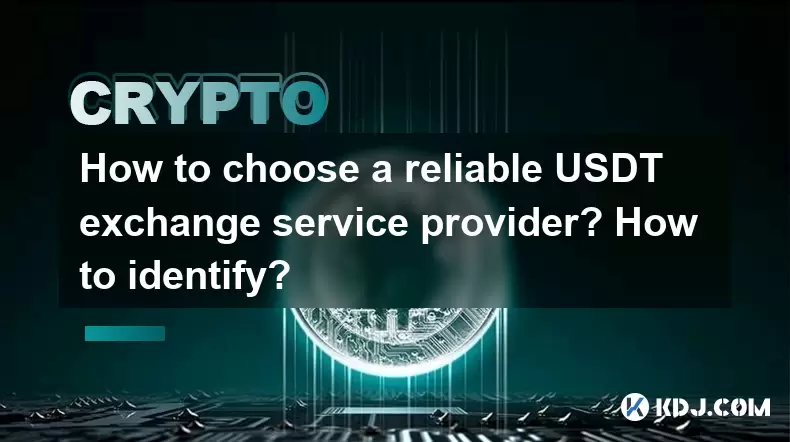
How to choose a reliable USDT exchange service provider? How to identify?
Jun 12,2025 at 03:15pm
Understanding the Role of USDT in Cryptocurrency TradingUSDT (Tether) is one of the most widely used stablecoins in the cryptocurrency market. It is d...
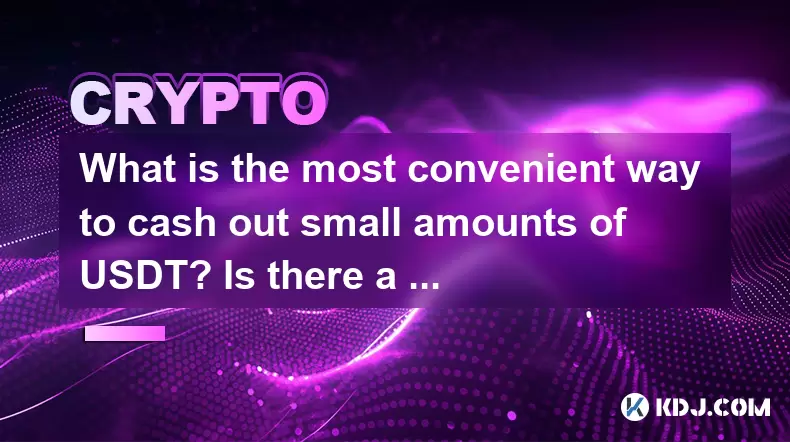
What is the most convenient way to cash out small amounts of USDT? Is there a shortcut?
Jun 11,2025 at 11:00pm
Understanding the Need to Cash Out Small USDT AmountsCashing out small amounts of USDT can be a challenge for many crypto users. Traditional methods o...
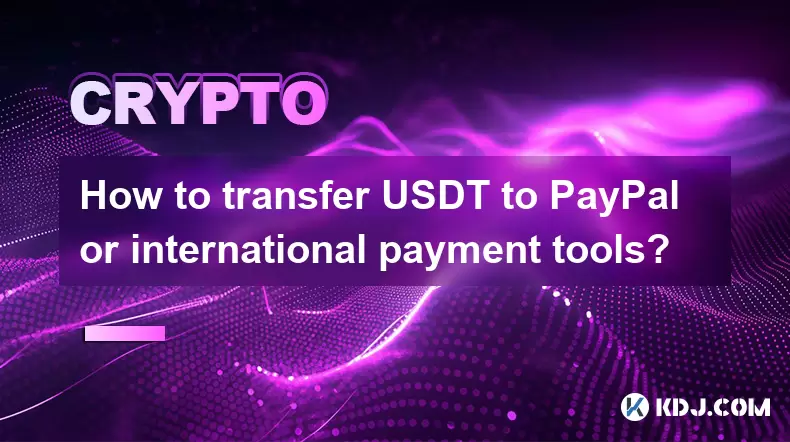
How to transfer USDT to PayPal or international payment tools?
Jun 15,2025 at 05:28am
Understanding the Basics of USDT and PayPal IntegrationUSDT (Tether) is a stablecoin pegged to the US dollar, offering blockchain-based value transfer...
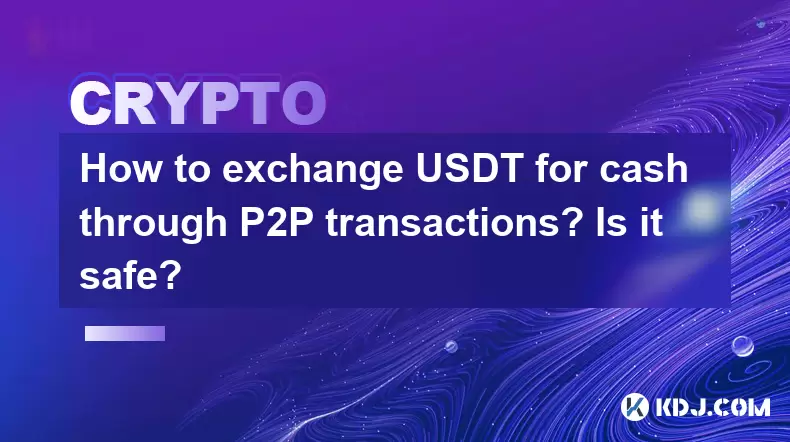
How to exchange USDT for cash through P2P transactions? Is it safe?
Jun 18,2025 at 07:56am
Understanding USDT and P2P TransactionsTether (USDT) is a stablecoin pegged to the value of the US dollar, making it a popular choice for users who wa...
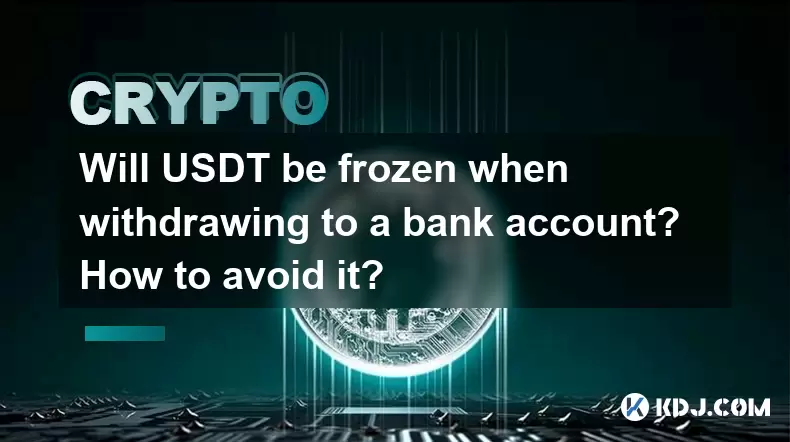
Will USDT be frozen when withdrawing to a bank account? How to avoid it?
Jun 15,2025 at 10:03am
Understanding USDT Withdrawals and Bank Account Freezing RisksWhen users decide to withdraw USDT (Tether) to a bank account, one of the most common co...
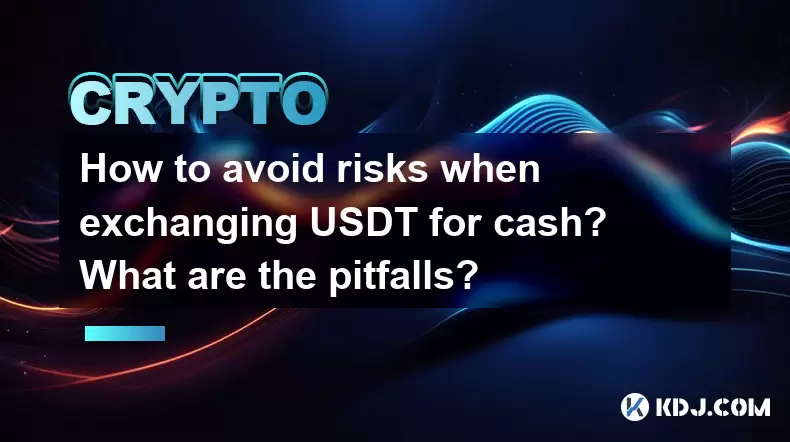
How to avoid risks when exchanging USDT for cash? What are the pitfalls?
Jun 11,2025 at 08:14pm
Understanding the Risks of Exchanging USDT for CashWhen exchanging USDT (Tether) for cash, users must be aware of the potential risks involved. As a s...

How to choose a reliable USDT exchange service provider? How to identify?
Jun 12,2025 at 03:15pm
Understanding the Role of USDT in Cryptocurrency TradingUSDT (Tether) is one of the most widely used stablecoins in the cryptocurrency market. It is d...

What is the most convenient way to cash out small amounts of USDT? Is there a shortcut?
Jun 11,2025 at 11:00pm
Understanding the Need to Cash Out Small USDT AmountsCashing out small amounts of USDT can be a challenge for many crypto users. Traditional methods o...

How to transfer USDT to PayPal or international payment tools?
Jun 15,2025 at 05:28am
Understanding the Basics of USDT and PayPal IntegrationUSDT (Tether) is a stablecoin pegged to the US dollar, offering blockchain-based value transfer...

How to exchange USDT for cash through P2P transactions? Is it safe?
Jun 18,2025 at 07:56am
Understanding USDT and P2P TransactionsTether (USDT) is a stablecoin pegged to the value of the US dollar, making it a popular choice for users who wa...

Will USDT be frozen when withdrawing to a bank account? How to avoid it?
Jun 15,2025 at 10:03am
Understanding USDT Withdrawals and Bank Account Freezing RisksWhen users decide to withdraw USDT (Tether) to a bank account, one of the most common co...

How to avoid risks when exchanging USDT for cash? What are the pitfalls?
Jun 11,2025 at 08:14pm
Understanding the Risks of Exchanging USDT for CashWhen exchanging USDT (Tether) for cash, users must be aware of the potential risks involved. As a s...
See all articles

























































































